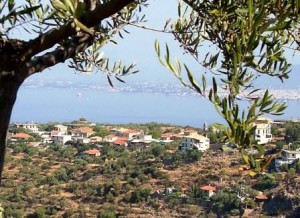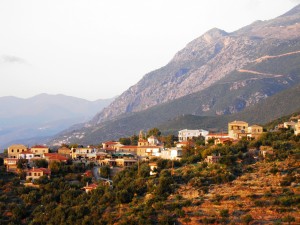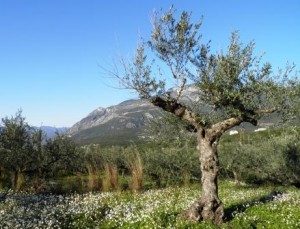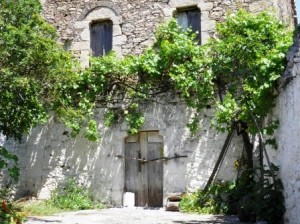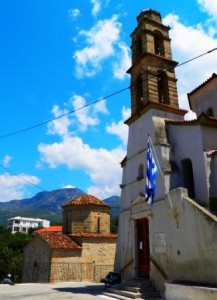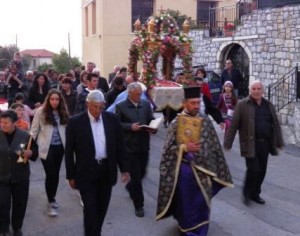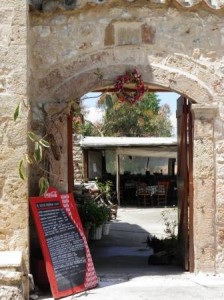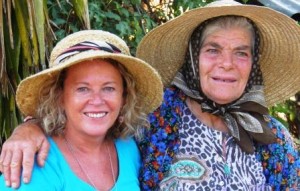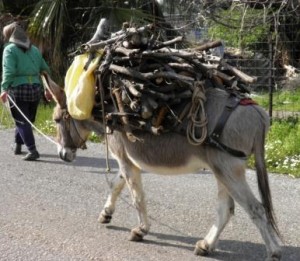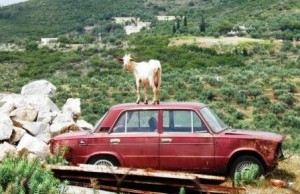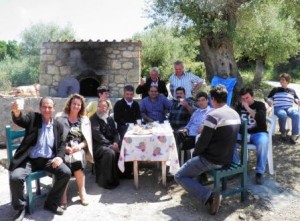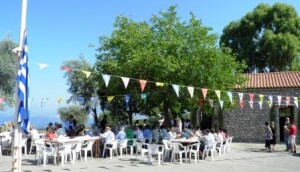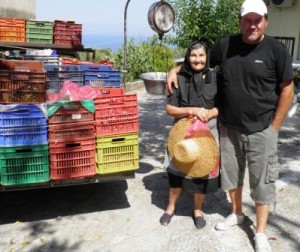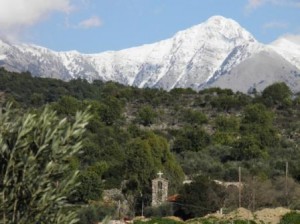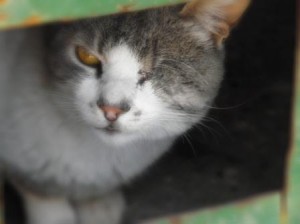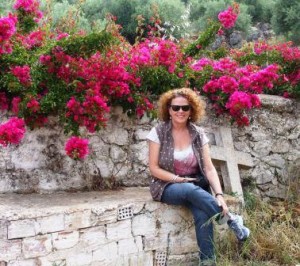THANKS to everyone who has read the book so far, and put excellent reviews on Amazon and sent comments to the website. Very much appreciated.
Quite a few people have asked about the hillside village, Megali Mantineia, where the book is set, and asked to see photos of it. So I’ve selected a few favourite images that give a sense of what this rural retreat in the north Mani (southern Peloponnese) is really like. Apart from its setting, the expanse of olive orchards, the fabulous views of the Taygetos mountains and the Messinian gulf, some of my favourite parts of the village are also its quirky, rough edges as well.
I have included a few photos of the villagers, the ones who were happy to be photographed, because in a small traditional settlement, not everyone is. Delightful Foteini, the goat farmer who has a starring role in the book, was generally always up for a photo.
In the three years we were in the Mani I have photographed her riding her donkey, harvesting olives, singing, dancing, carrying out the painstaking business of clothes washing, under her mulberry trees using an ancient cauldron, with plenty of repartee and laughter to break the monotony. I’ve also taken pictures of her small donkey loaded up with olive wood and a vast array of other rural and household goods – and even wearing a makeshift ‘raincoat’. Prada – not.
Most of the hundreds of pictures I took are a delightful portrait of village life but will remain unpublished for the time being. Since the book came out in July, Foteini has been somewhat mystified by the attention she’s had because of it, and because of the illustration on the book jacket of her on the donkey which appeared in newspaper articles and news websites around Greece in August. It was a wave of attention that neither of us expected. Some people, including foreign tourists, have recognised her on the donkey and stopped her on the road to show her articles and wave copies of the book, which, mostly, has made her smile.
The last time I spoke to her on the phone, I asked her what she thought of her overnight celebrity. She was sweetly disinterested. “When are you coming back to Greece?” was her slightly gruff response.
The picture below is the village on the hillside taken from a nearby ridge, with the Taygetos mountains behind. The gorgeous olive orchards are a feature of this part of the Mani. The bottom picture shows a typically old village house that now sits empty but gives some idea of Megali Mantineia’s thriving past when it had many fine stone villas, several shops, and even a police station.
The village church is where all the Sunday services take place. It was here on the forecourt (just to the left) we gathered at Easter before Wallace escaped from the house and gatecrashed the Good Friday procession, where the flower-decked Epitafios is carried through the village.
The kafeneion, the Kali Kardia (Good Heart), with its old stone archway, is the heart of the village in many ways. It was the scene of many summer evening get-togethers and humorous discussions with its owners Angeliki and Ilias.
Foteini is one of many goat farmers in the village with her own rambling olive groves as well. Few do as much work on their own as Foteini, pictured on her farm with me, below. And carrying olive wood on her donkey. Bottom, a typical rural scene, with a goat tap-dancing on an abandoned car.
Like all Greek villages, Megali Mantineia celebrates plenty of feast days to honour different saints. The picture below shows a group of villagers and the two local papades (priests) at the feast of Ayios Yiorgos (St George’s day). The villagers collected money that year to build a fabulous new wood-fired oven (pictured, left) to serve trays of baked lamb and goat at regular festivals here. The events continued during the crisis, food provided by the four generous local taverna owners, and served by uncomplaining local teenagers.
Here’s another celebration beside the small church of Ayia Triada with a view towards the Messinian gulf.
The village is visited every week by friendly Vassilis the manavis (grocer) in his truck where women gather round for a bit of gossip as much as a weekly shop. Here he is with Maria, a sweet elderly lady who was one of the regular church-goers, mentioned in the book.
The village has views of sea and mountains and never more spectacular than in winter with the nearby snow-capped Taygetos mountains.
In the village, Wallace our Jack Russell was one of the few domesticated dogs but there were plenty of cats, including Cyclops, the one-eyed moggie who lived on our rented property and had a few steeple chases through the garden with Wallace.
The village has some quiet, peaceful spots. Here’s a favourite of mine, a bench outside the walls of the old cemetery, overhung with bougainvillea. It was always a nice place to sit and watch village life stream on by.
A BOOK ABOUT LIVING IN GREECE
If you want to know more about life in a traditional rural village in the Mani and about the wonderful local characters we met, it’s all in my book: Things Can Only Get Feta: Two journalists and their crazy dog living through the Greek crisis (Bene Factum Publishing, London).
For details about the book go to the home page of our website www.bigfatgreekodyssey.com
Visit Amazon to buy the book (Kindle version – new edition). A new edition of the paperback will also be available shortly.
If you have already read the book and liked it please think about leaving a small review on Amazon. It will be very much appreciated.
© Text and photographs copyright of the authors 2013
I always love to hear from blog readers. To leave a comment, please click on the ‘comment’ link below. Thank you.
